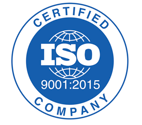 At PRP, we believe that staying connected to Pharmaceutical and Medical Device experts is paramount to gathering the key information necessary to stay on the cutting edge of this ever-changing industry. For this reason, we have started a new guest blog series written by industry thought leaders who are eager to share their wealth of knowledge and experience with the world.
At PRP, we believe that staying connected to Pharmaceutical and Medical Device experts is paramount to gathering the key information necessary to stay on the cutting edge of this ever-changing industry. For this reason, we have started a new guest blog series written by industry thought leaders who are eager to share their wealth of knowledge and experience with the world.
Today, we've invited guest blogger Mark Neal to shed light on a hot topic that has been on many medical device manufacturer's minds, the new EU MDR. Mark has over 35 years of quality and regulatory compliance experience working for large companies such as Baxter Healthcare, GE Healthcare, and Alcon Laboratories, among others.
Read below to learn what Mark believes is crucial for all medical device manufacturers to know about the new EU MDR. - Stefanie Wichansky, Founder & CEO of PRP
The European Union Medical Device Regulation (EU MDR) (2017/745 ) was approved by the European Parliament on May 25, 2017, initiating the transition period to mid-2020. The new regulation recognizes historical medical device problems, especially with implantable devices, and intends to strengthen regulatory requirements and oversight to approach a more FDA-like regulatory environment with a desire to foster innovation.
If your company has not yet started preparing for EU MDR, you must start immediately, as the transition period to 2020 will likely be consumed by activity to generate clinical evidence for your products.
The shift from the prior EU MDR has resulted in more prescriptive regulation (MDD - 60 pages, MDR - 566 pages), greater European Commission oversight, significant changes in Notified Body requirements and oversight, and requirements for product-specific clinical evidence, among other notable changes.
One of the biggest impacts to manufacturers with existing products on the market is the new MDR requirement for clinical evidence specific to your product. Past use of data from similar products and published data from competitor products will be extremely limited, if accepted at all. This will apply to existing and currently approved products after the MDR transition period.
If product-specific evidence through an appropriate clinical study is insufficient, the product’s certificate will likely not be renewed. Therefore, manufacturers should be assessing their currently marketed products, selecting those to be marketed after the transition period, and initiating required clinical studies.
All other currently marketed products will be orphaned at the end of the transition period and must be removed from the market when their certificates expire. In addition, historical market data and complaint/vigilance data will not be accepted in lieu of a true clinical study.
New or modified labeling will be required for all products, including product packaging labels and Instructions for Use. Product claims will have to be included in the labeling and substantiated by clinical evidence from the studies identified above.
Post-market surveillance requirements are strengthened, including complaint/vigilance trend analysis, continuous risk management, and more reporting of trends through Product Safety Update Reports (PSURs) and vigilance reports. Requirements for Clinical Evaluation Reports (CERs) now include specific requirements for reviewer qualifications. Post-Market Clinical Follow-Up (PMCF) studies are required to support future product renewals after MDR implementation. All of these changes together are intended to provide earlier warning of product issues in the field and trigger actions to prevent patient safety impacts.
MDR requirements for Notified Bodies (NBs) are getting tougher, and the oversight of NBs by the European Commission and Competent Authorities is much greater. All NBs will have to be re-designated, and as a result, the number of Notified Bodies will be reduced by more than 30%. Many NBs are still not internally ready to help and support their manufacturer clients and are pushing off clients to get their internal processes prepared.
NBs are stretched thin and you can expect long lead times for product approvals, both for ongoing product introduction/changes and for MDR compliance. All this further exacerbates short timelines for manufacturers to make progress toward assessing and implementing changes to prepare for MDR enforcement.
Finally, the EU MDR is coming at a time coincident with other significant changes, including MDSAP and ISO 13485:2016. These must be planned carefully in a coordinated manner to avoid issues which may impact continued product distribution through the MDR transition period as certificates expire.
A Call to Action
If your company has not yet started preparing for EU MDR, you must start immediately, as the transition period to 2020 will likely be consumed by activity to generate clinical evidence for your products.
Suggestions to get started:
- Initiate an internal project team with senior members from, at a minimum, R&D, Clinical Affairs, Regulatory Affairs, and Quality, and create extended teams to do the required work
- Review and train on the MDR and develop an initial implementation plan
- Contact your Notified Body and begin discussing the transition to gain their commitment to assist, to conduct required audits, and review technical dossiers and clinical data for related product approvals
- Consider hiring a consultant with deeper knowledge to assist in the development and/or review of procedure revisions, technical dossier improvements, clinical study plans and reports, etc.
- Create a product portfolio rationalization team to identify the current products that must have clinical evidence for continued marketing after MDR implementation
- Initiate clinical studies for the remaining products from the rationalization where appropriate and where adequate clinical data is not sufficient
- Develop procedures and work instructions to implement MDR requirements [Note: consider including ISO 13485:2016 and MDSAP requirements in these revisions to ensure compatibility]
- Conduct mock audits with your Notified Body or consultant to ensure the changes required have been properly implemented and that sufficient objective evidence exists to successfully complete the formal audits for MDR compliance determination
New medical device regulations will bring new challenges to your regulatory staff. Enlist the experts to fill the gaps in your current team to be sure you are adequately prepared for the new EU MDR in 2020. (PRP can help, contact us today!)
 Mark Neal is formerly Vice President, Quality for St. Jude Medical (acquired by Abbott), and has 35 years of experience in all aspects of Quality and Regulatory Compliance.
Mark Neal is formerly Vice President, Quality for St. Jude Medical (acquired by Abbott), and has 35 years of experience in all aspects of Quality and Regulatory Compliance.
Mark’s career has been predominantly in complex electro-mechanical, software-driven embedded systems, associated disposables and applications software in high reliability and human safety critical products.
Prior to St. Jude Medical, Mark served in Quality Leadership roles at Baxter Healthcare, GE Healthcare, Alcon Laboratories, Adaptec, Abbott Laboratories, and Texas Instruments. Mark also served in the U.S. Army as an Ordnance Corps ammunition and nuclear weapons officer and holds a B.S. in Nuclear Engineering from Texas A&M University.
Mark is active in the American Society for Quality (ASQ) where he is a Fellow of the Society and holds certifications in quality management, quality engineering, software quality engineering, and quality auditing. He and his wife live in the North Dallas, TX area and enjoy traveling and scuba diving.




